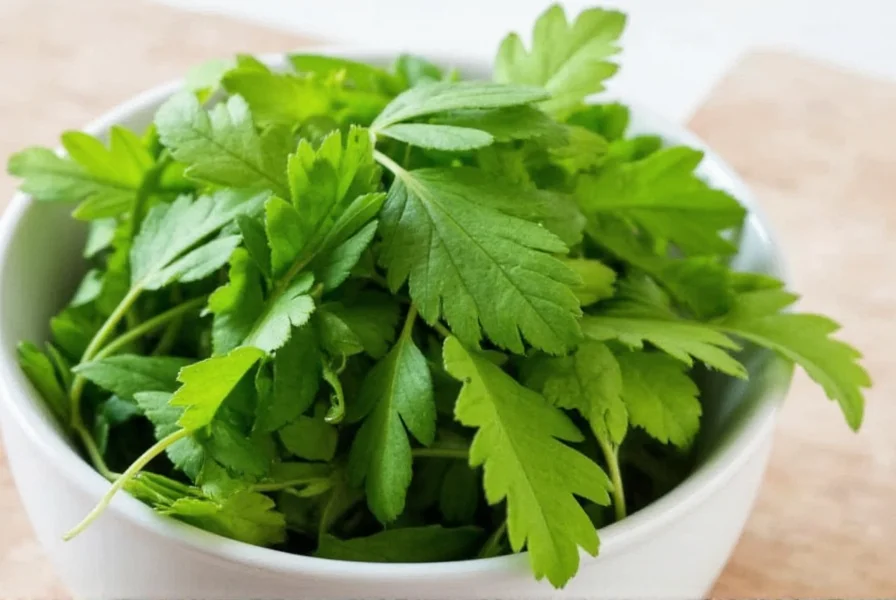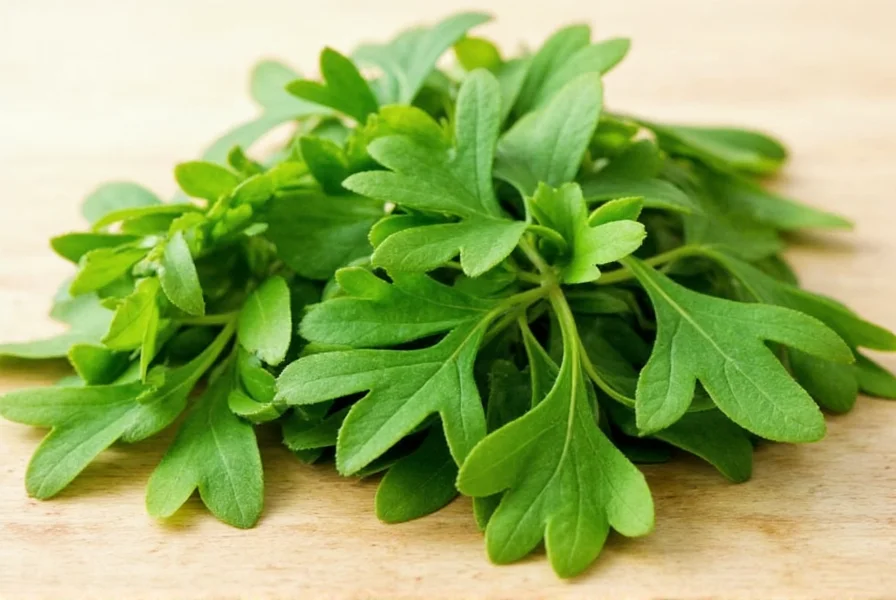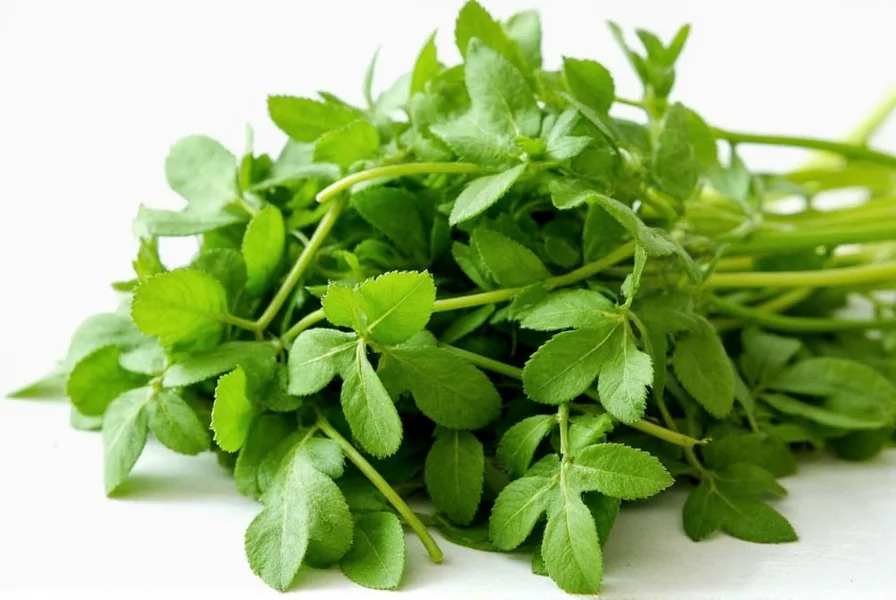Fresh fenugreek leaves offer a unique culinary experience that differs significantly from their dried counterparts. While dried fenugreek (kasuri methi) provides a concentrated, earthy aroma perfect for finishing dishes, fresh leaves deliver a more complex flavor profile with subtle bitterness balanced by grassy sweetness. This versatile herb grows on the same plant that produces fenugreek seeds, but the leaves represent a distinct ingredient with their own culinary applications and nutritional advantages.
Identifying Quality Fresh Fenugreek Leaves
When selecting fresh fenugreek leaves at the market, look for vibrant green color without yellowing or wilting. The leaves should appear crisp and slightly moist but not soggy. High-quality fresh methi will have a pleasant herbal aroma with just a hint of the characteristic fenugreek bitterness. Avoid leaves with dark spots, excessive yellowing, or a slimy texture, which indicate spoilage.
| Characteristic | Fresh Fenugreek Leaves | Dried Fenugreek (Kasuri Methi) |
|---|---|---|
| Flavor Profile | Bitter-sweet with herbal notes | Earthy, concentrated, slightly nutty |
| Texture | Tender, delicate leaves | Crumbly, dried leaves |
| Nutritional Value | Higher vitamin C content | More concentrated minerals |
| Common Uses | Cooked in curries, parathas, stir-fries | Finishing spice, seasoning |
Nutritional Benefits of Fresh Fenugreek
Fresh fenugreek leaves contain significantly higher levels of vitamin C compared to their dried counterparts, making them valuable for immune support. A 100g serving provides approximately 30% of your daily vitamin A needs, supporting eye health, and delivers substantial amounts of vitamin K for blood clotting and bone health. The leaves also contain dietary fiber that aids digestion and compounds like flavonoids that function as antioxidants.
Research suggests that fenugreek leaves may support healthy blood sugar levels and provide anti-inflammatory benefits, though most studies focus on fenugreek seeds rather than leaves. When incorporating fresh fenugreek into your diet for potential health benefits, remember that culinary use provides moderate amounts of these compounds rather than therapeutic doses.
Culinary Applications and Cooking Techniques
Chefs value fresh fenugreek leaves for their ability to add depth to dishes without overwhelming other flavors. In Indian cuisine, methi paratha features the leaves finely chopped and incorporated into flatbread dough. For authentic aloo methi, cook potatoes with fresh fenugreek leaves to create a balanced bitter-sweet curry.
When cooking with fresh fenugreek leaves, add them during the middle of the cooking process rather than at the end. This allows their characteristic bitterness to mellow while retaining flavor. For best results when using fresh fenugreek leaves in recipes, chop them finely to distribute their flavor evenly throughout the dish. The leaves work particularly well in:
- Vegetable stir-fries with garlic and mustard seeds
- Legume dishes like chana (chickpea) curry
- Egg preparations such as methi omelets
- Traditional Iranian ghormeh sabzi herb stew
Storage Methods for Maximum Freshness
Proper storage extends the shelf life of fresh fenugreek leaves significantly. For short-term storage (3-5 days), wrap the leaves in a slightly damp paper towel and place them in an airtight container in the refrigerator's crisper drawer. For longer preservation, consider these methods:
- Freezing: Blanch leaves for 30 seconds in boiling water, then plunge into ice water. Pat dry and freeze in airtight bags for up to 6 months.
- Drying: Spread leaves on a baking sheet and dry in the oven at the lowest setting until crisp, then crumble for use as kasuri methi substitute.
- Oil Preservation: Chop leaves finely, cover with olive oil, and refrigerate for up to 2 weeks.

Finding and Substituting Fresh Fenugreek
Fresh fenugreek leaves appear seasonally in many regions, typically from late fall through early spring. You'll most commonly find them at South Asian grocery stores, Middle Eastern markets, or specialty produce sections. In areas where fresh fenugreek remains unavailable, consider these substitution options:
- Dried fenugreek leaves (use 1 teaspoon dried for every ¼ cup fresh)
- Curry leaves with a pinch of celery leaves for similar herbal notes
- Spinach with a squeeze of lemon juice to mimic the slight bitterness
When growing your own fenugreek plant for leaves, harvest when plants reach 6-8 inches tall, taking only a few leaves from each plant to encourage continued growth. Fenugreek grows well in containers, making it accessible even for urban gardeners interested in cultivating fresh methi leaves at home.

Simple Recipe: Methi Aloo (Potatoes with Fresh Fenugreek)
This classic North Indian dish showcases how fresh fenugreek leaves complement staple ingredients. For authentic methi aloo preparation:
- Sauté 2 chopped onions until golden
- Add 1 tablespoon ginger-garlic paste and 2 chopped green chilies
- Stir in 500g diced potatoes and 1 cup chopped fresh fenugreek leaves
- Add ½ teaspoon turmeric, 1 teaspoon cumin seeds, and salt to taste
- Cook covered until potatoes are tender, stirring occasionally
- Finish with a squeeze of lemon juice before serving
The bitterness of the fresh fenugreek leaves balances perfectly with the earthy potatoes, creating a dish that's both nutritious and flavorful. This represents one of the most common applications when cooking with fresh methi leaves in traditional cuisine.











 浙公网安备
33010002000092号
浙公网安备
33010002000092号 浙B2-20120091-4
浙B2-20120091-4